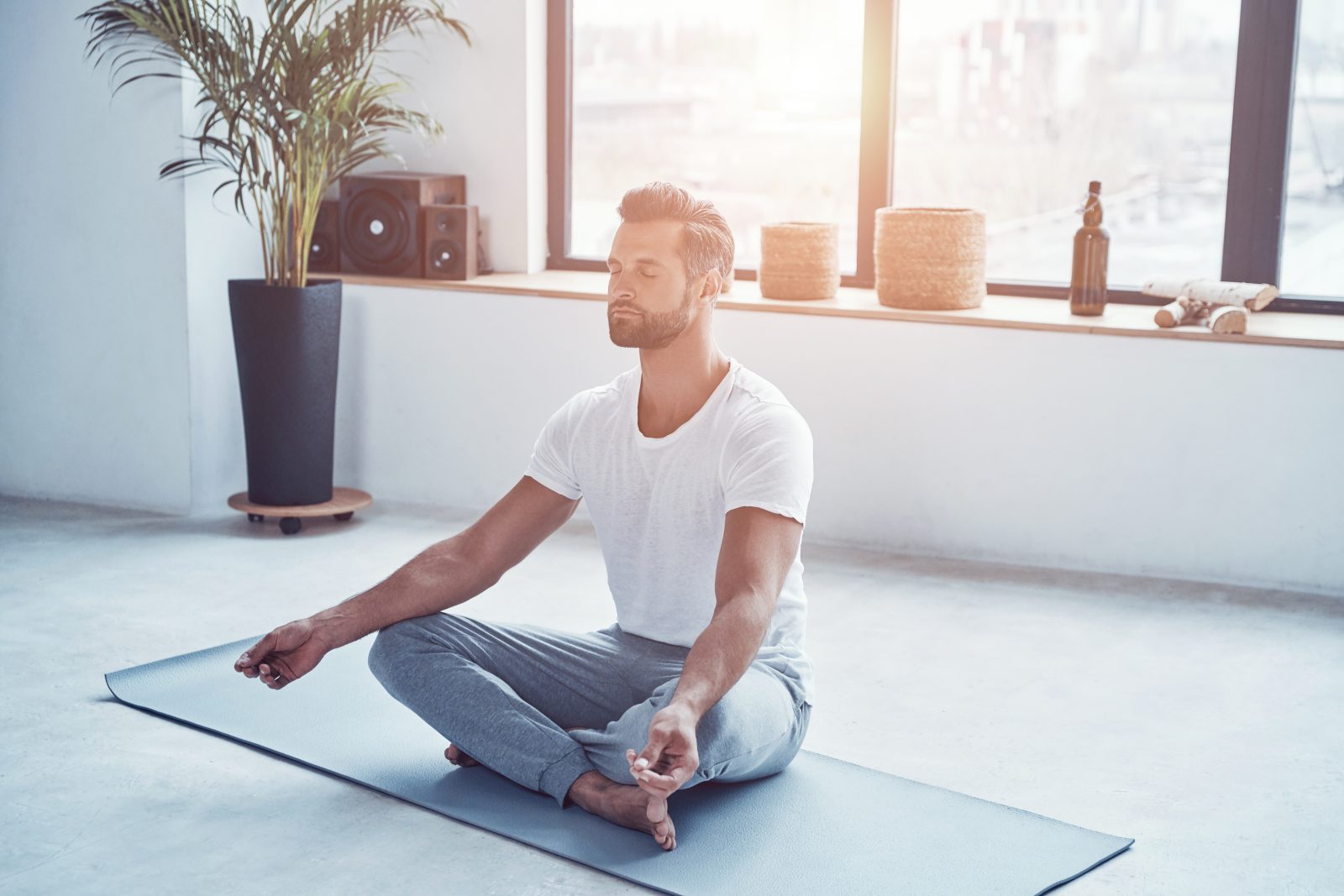Yoga is renowned for its myriad health benefits, and its positive impact on prostate health is no exception. Regular practice of yoga can help improve blood circulation, reduce inflammation, and promote relaxation. Moreover, certain yoga poses can specifically target the pelvic area, supporting prostate health and potentially reducing the discomfort associated with an enlarged prostate.
Benign prostatic hyperplasia (BPH), or swollen prostate, is a common problem for older men. It occurs when the prostate gland, which surrounds the urethra, grows in size and starts to press against the urethra, causing urinary difficulties. While medical treatments are available, incorporating holistic practices like yoga can offer supplementary relief.
1. Bow Pose (Dhanurasana)
● Place your palms up alongside your body while you lay on your stomach.
● Bring your feet up slowly while bending your knees, and reach behind to grab the outside of your ankles.
● Get as much of your body as you can off the mat, including your head, chest, and shoulders.
● Don’t let your knees give way to the side.
● Keep your head facing ahead or up, and keep your breathing slow and deep.
● Keep it there for up to 30 seconds, and then let go.
● This position can be repeated twice.
2. Big toe posture (Supta Padangusthasana)
● Spread your legs out flat on the floor and have a strap handy.
● Pull the left thigh into the chest by bending the left knee.
● Pull your right toe back towards your shin and press out through the sole of your right foot as you apply heavy pressure to your right leg against the floor.
● Wrap the strap around the top of your left foot, holding it with both hands.
● Maintaining a straight leg, press the ceiling with the sole of the left foot.
● Press your shoulders onto the floor while spreading your collarbones wide, and walk your hands up the strap towards your foot.
● If it feels good, you can let your leg hang out to the left while holding on to the strap with your left hand. The right leg should be kept heavy and planted on the floor.
● In order to unfasten the left leg, you must raise it back up to the top, unbuckle the strap, and pull the leg back into your chest.
● Change your legs and do it again.
3. Head-to-knee pose (Janusirsasana)
- Spread your legs out in front of you and sit on the floor.
- To do this, bend your right knee and place the bottom of your right foot against the inside of your left thigh.
- Put a pillow beneath your sitting bones or your right knee if you need extra comfort while sitting.
- You should twist your upper body to the left so that the inner part of your left leg is parallel to your navel.
- Put your hands where they can’t be seen, or move them slowly in front of you.
- Hinge at the hips to get lower to the ground, tucking the chin into the chest as you do so.
- You can bend the extended leg and curve your back without being out of line.
- Upon inhalation, slowly come out of the pose by walking your hands back and lifting your torso.
- Turn the page and do it again.
4. The cobbler’s position (Baddha Konasana)
- Put your legs out in front of you and take a seat.
- If you need more support for your hips, you can sit on the edge of a cushion.
- Put the soles of your feet together and bend your knees to the side.
- To increase the stretch, bring your heels closer to your torso and release them to relax.
- You can tuck your pinky toes under your feet by interlacing your fingers.
- Walking your hands forward, rounding your spine, and tucking your chin towards your chest can eventually lead you to a forward fold.
- Take several slow, deep breaths and try to let go of whatever stress you may be feeling.
- Walk your hands up and out of the posture, then stretch your legs out in front of you.
5. Here (Virasana)
- Put your legs up with your toes facing backward to create a comfortable sitting position.
● Put a pillow under your bottom if you need to.
● Stretch out your back and put your palms on your thighs.
● Always remember to bear weight on your hips rather than your knees.
● While in this position, you can perform Kegel exercises.
● Roll to one side and uncross your legs to end the stance.
Various approaches may be used
Hatha
This is a more conventional approach to yoga. Classical yoga poses are practiced at a slower pace, and attention is paid to the breath. Alignment and a leisurely pace characterize most classes. The practice of meditation is also possible.
Yin
This is a great option since it facilitates deep relaxation all over the body, notably in the hips, pelvis, and lower back. In this meditation practice, you focus on stretching your connective tissues. Each pose can be maintained for up to five minutes.
Restorative
This style of yoga aims to loosen the muscles and increase flexibility. The use of props allows you to hold positions for up to 20 minutes, during which time you will attain a profound level of relaxation.
Kundalini
By practicing kundalini yoga, you can access the power in your spinal column’s foundation. The practice’s main goals are to increase vitality and promote the movement of energy up the spine. Meditation, the singing of sacred mantras, and physical postures are all part of the curriculum.
Child’s pose (Balasana)
Balasana, or Child’s Pose, is an excellent starting point to relieve tension in the pelvic region. By gently stretching the lower back and hips, this pose encourages relaxation and increases blood flow to the prostate. It also promotes a sense of calm, which can be particularly beneficial for managing stress-related symptoms.
Bridge pose (Setu Bandhasana)
The bridge pose effectively engages the pelvic muscles, strengthening and toning them. This can help improve overall support for the prostate gland, potentially reducing the pressure on the urethra. Additionally, the pose stimulates the thyroid gland, which plays a role in regulating metabolism and hormone balance.
Reclined Bound Angle Pose (Supta Baddha Konasana)
By gently stretching these muscles, it can alleviate tension in the pelvic region and improve flexibility. This pose also helps to relax you, which is good for the health of your prostate.
Happy Baby Pose (Ananda Balasana)
The Happy Baby Pose provides a gentle yet effective stretch to the lower back, hips, and groin. It helps release tension in the pelvic muscles, promoting relaxation. This pose also encourages deep breathing, which can enhance oxygen supply to the prostate and surrounding tissues.
Cobra Pose (Bhujangasana)
The Cobra Pose involves gentle back bending, which can help stimulate circulation in the pelvic area. Improved blood flow can aid in reducing inflammation and supporting overall prostate health. This pose also strengthens the back muscles, promoting better posture and reducing strain on the lower back.
Safety measures and tips
While yoga can be highly beneficial, it’s essential to practice safely. If you’re new to yoga or have any existing health concerns, consult your healthcare provider before starting a new routine. Listen to your body, avoid overexertion, and modify poses as needed to suit your comfort level.
Incorporating yoga into your routine
To experience the benefits of these yoga poses, consider integrating them into your daily routine. Starting with a few minutes each day and gradually increasing the duration can help you build flexibility, strength, and relaxation over time. Consistency is key, so find a routine that works for you and stick with it.
Incorporating yoga into your lifestyle can be a valuable addition to your enlarged prostate management strategy. These five yoga poses, when practiced regularly and mindfully, can help reduce discomfort, promote relaxation, and support overall prostate health. Remember, yoga is a holistic practice, and its benefits extend beyond the physical, contributing to your mental and emotional well-being as well.














Find Us on Socials